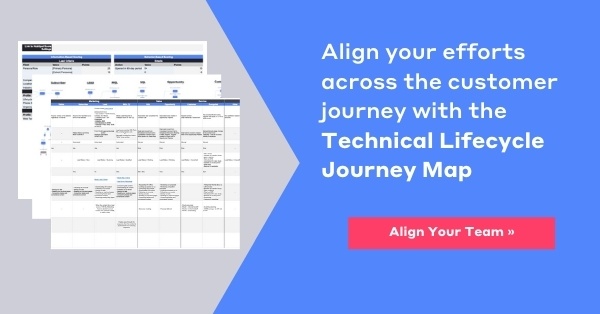What is Tech Debt? How it Impacts Your Business?
by DJ Shirley | Updated Jun 6, 2025
Have you asked the question - which tool/platform has that information? Or why do I have to input this contact data in tool A and tool B? With the continual expansion of application and software tools for B2Bs, these questions are becoming more common. Organizations are piecing together technology to support the day to day operations of their business. A common issue that can arise from adding (or not adding) technology is tech debt.
The term is originally from the software developer world. The concept of tech debt is the implied cost of additional rework caused by choosing an easy solution in the short term instead of using a better approach that would take longer on the front end.
What is Tech Debt?
In the world of RevOps, Tech Debt is the implied cost caused by inefficiencies affiliated with the technology employed by the company.
The same overall concept is carried over from the original term used by developers but expanded to factor in the organizations' overall tech stack and how all of the technology works together to support the company's revenue engine.
Why is tech debt important?
As with monetary debt, if technical debt is not repaid, it can accumulate and can make implementing a change or pivot more difficult in the future. However, not all tech debt is bad, and sometimes it may be necessary to test a concept, meet a deadline, or intentionally want to overlap applications to best fit your needs. In these cases, you plan to take on a specific amount of tech debt, but the short term gain outweighs the overall cost of recovery in the future.
Maintaining awareness of your tech debt is important because it allows you to stay within a comfortable threshold and take action if surpassed. Additionally, you will also know what form the expense will be when it comes time to recover from the debt. The 3 costs used to recover tech debt include money, expertise, and time. Often it is a combination of the 3 costs.
Common sources of tech debt:
Tech debt in the realm of RevOps can be caused by a number of different sources. Factors that create tech debt:
- Poorly Built Processes
One of the two most common tech debt sources from the RevOps perspective is caused when the processes meant to guide your team within a specific application are poorly built (or are non-existent). If this occurs, you have several factors that begin to create tech debt. The first and most important is consistency. If you have multiple individuals all using the same platform in different ways, then the functions, data, and output of that tool will be different for each individual. This directly impacts your ability to scale and quickly onboard new team members because everyone has their own way of doing things. A secondary impact of not having a uniform process can lead to dirty data, which requires a dedicated push of time and expertise to recover from. - Duplicate or overlapping applications used by the company
Tech debt can also begin to accumulate when you have multiple tools or applications that serve similar functions. This most commonly occurs within organizations that have siloed departments. For example, both the Sales and marketing teams are paying for similar software applications that could be shared between the two departments. - Disjointed tech stack
The second most common source of tech debt is caused by disconnected platforms that don't communicate with each other or lack the middleware to connect and exchange specific data. This results in information gaps between teams and in the organization's overall business intelligence reports.
What is the impact of tech debt?
It's expensive!
Paying for duplicate tools and/or seats within tools can quickly add up and directly impact your expenses.
It Slow Revenue Growth
If your applications and processes are not architected correctly and don't talk to each other, you limit your ability to scale and grow.
It impacts team morale and camaraderie
Morale: Missing integrations between applications can force team members in your organization (potentially top performers) to spend their precious time carrying tasks that could simply be automated or cut out altogether.
Example - They may have to add or pull the same piece of information from your CRM, PM, and file management system.
Camaraderie: As mentioned earlier, missing integrations can limit your organization's ability to have a uniform flow of data through the company. Inconsistent data can cause infighting or foster a last of communication between teams because they track different data. In short, trust can erode between departments and with leadership.
Ways to avoid tech debt
Step 1 - Audit your current tech stack and customer lifecycle journey
- Conduct a tech stack audit to uncover any duplicate applications?
- Research pricing and capabilities to see if you can shift to a more effective application that would allow you to get rid of several other tools?
- Audit your customer lifecycle journey and identify gaps or hurdles that are directly impacting your customer journey.
Get a free copy of our Technical Lifecycle Journey Map tool so you can quickly identify any gaps between each lifecycle stage in your customer journey and uncover any technology that needs to be addressed.
Step 2 - Conduct simple team surveys.
- Short survey hitting each department in your company that identifies what applications they use, love, and dislike. Identify any bottlenecks that your tech can potentially support.









